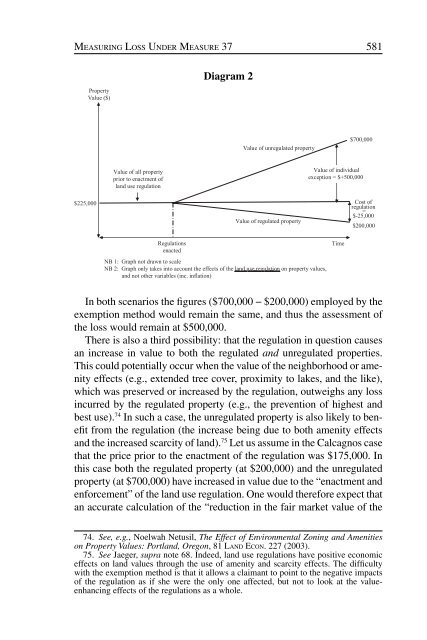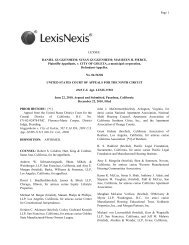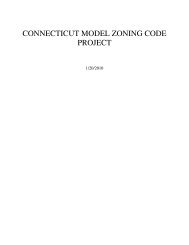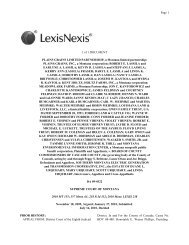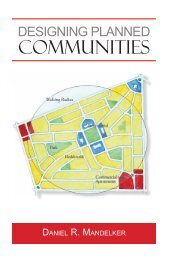Through a Glass Darkly: Measuring Loss Under ... - Land Use Law
Through a Glass Darkly: Measuring Loss Under ... - Land Use Law
Through a Glass Darkly: Measuring Loss Under ... - Land Use Law
Create successful ePaper yourself
Turn your PDF publications into a flip-book with our unique Google optimized e-Paper software.
MEASURING LOSS UNDER MEASURE 37 581<br />
Property<br />
Value ($)<br />
Diagram 2<br />
Value of unregulated property<br />
$700,000<br />
Value of all property<br />
prior to enactment of<br />
land use regulation<br />
Value of individual<br />
exception = $+500,000<br />
$225,000<br />
Value of regulated property<br />
Cost of<br />
regulation<br />
=<br />
$-25,000<br />
$200,000<br />
Regulations<br />
enacted<br />
NB 1: Graph not drawn to scale<br />
NB 2: Graph only takes into account the effects of the land use regulation on property values,<br />
and not other variables (inc. inflation)<br />
Time<br />
In both scenarios the figures ($700,000 − $200,000) employed by the<br />
exemption method would remain the same, and thus the assessment of<br />
the loss would remain at $500,000.<br />
There is also a third possibility: that the regulation in question causes<br />
an increase in value to both the regulated and unregulated properties.<br />
This could potentially occur when the value of the neighborhood or amenity<br />
effects (e.g., extended tree cover, proximity to lakes, and the like),<br />
which was preserved or increased by the regulation, outweighs any loss<br />
incurred by the regulated property (e.g., the prevention of highest and<br />
best use). 74 In such a case, the unregulated property is also likely to benefit<br />
from the regulation (the increase being due to both amenity effects<br />
and the increased scarcity of land). 75 Let us assume in the Calcagnos case<br />
that the price prior to the enactment of the regulation was $175,000. In<br />
this case both the regulated property (at $200,000) and the unregulated<br />
property (at $700,000) have increased in value due to the “enactment and<br />
enforcement” of the land use regulation. One would therefore expect that<br />
an accurate calculation of the “reduction in the fair market value of the<br />
74. See, e.g., Noelwah Netusil, The Effect of Environmental Zoning and Amenities<br />
on Property Values: Portland, Oregon, 81 LAND ECON. 227 (2003).<br />
75. See Jaeger, supra note 68. Indeed, land use regulations have positive economic<br />
effects on land values through the use of amenity and scarcity effects. The difficulty<br />
with the exemption method is that it allows a claimant to point to the negative impacts<br />
of the regulation as if she were the only one affected, but not to look at the valueenhancing<br />
effects of the regulations as a whole.<br />
ABA-TUL-07-0701-Sullivan.indd 581<br />
9/18/07 10:43:40 AM


